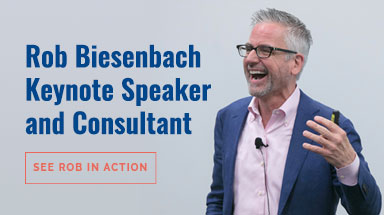
Sergio Marchionne
Fiat Chrysler CEO Sergio Marchionne died unexpectedly last week. It was a great loss — for the company that he helped rescue from the brink, and for his family and friends, of course.
In my latest book I wrote about an electric moment in Chrysler’s history where Marchionne took the stage and demonstrated the power of emotional storytelling to rally people around a cause, a brand, a leader. (With a notable assist from the iconic Clint Eastwood “Halftime in America” TV spot.)
This post is adapted from the book Unleash the Power of Storytelling: Win Hearts, Change Minds, Get Results.
Emotion Unlocks Action
The power of emotional storytelling is well established. We all like to think that we are rational beings, carefully weighing all the pros and cons and making decisions based strictly on evidence and reason.
But deep down we are creatures of emotion. We’re driven by feelings of fear or vanity or security. It’s often said that people buy on emotion and justify with logic — facts and data are used to shore up and defend what we’ve already decided in our hearts.
There’s even evidence to suggest that emotion doesn’t just drive decision-making, it unlocks it. Neuroscientist Antonio Damasio studied a man who had sustained damage to the area of the brain that governs emotion. As a result of the injury he was rendered incapable of making even the simplest decisions.
The bottom line? When your audience feels something, they are more likely to do something (to act in the way you want them to act — buy, get on board, change their behavior, etc.).
And stories are the perfect emotion delivery vehicle.
To Trigger Emotion, Show Emotion
So your job as a storyteller is to provoke an emotional reaction — to break down people’s defenses and leave them more open to influence.
The best way to do that is to exhibit some emotion yourself, to play to people’s natural sense of empathy.
In 2009, Chrysler was a company on the brink of oblivion. It went through bankruptcy, reorganization and a government bailout. Its rebirth is one of America’s great comeback stories.
It’s Halftime in America
At a 2014 meeting with Chrysler dealers, CEO Sergio Marchionne rallied his battered troops with these words, as reported in the New York Times:
Those who have lived through difficulties and have seen the dark days of desperation know that the only way to get through them is by finding the values that are important in life; rediscovering a sense of belonging to a project, a community, a nation; embracing hope; looking ahead; and taking your destiny into your own hands.
If Chrysler — a company that was practically sentenced to death by the press, the financial world and the public at large — was able to do it, then there’s hope for everyone. There’s always a light at the end of the tunnel and there’s always a way to get there.
Marchionne was channeling what they were all feeling, and they were right there with him. The capstone was when he unveiled the now iconic “Halftime in America” TV spot set to run on Super Bowl Sunday:
As Clint Eastwood narrated:
People are out of work and they’re hurting, and they’re all wondering what they can do to make a comeback … Detroit’s showing us it can be done … this country can’t be knocked down with one punch. We get right back up again and when we do, the world’s going to hear the roar of our engines. Yeah. It’s halftime, America. And our second half is about to begin.
It was undoubtedly an electric moment, but as they say in the viral video business, you won’t believe what happened next …
Can You Go Too Far with Emotion?
When the lights came back up, Marchionne concluded, “Nothing more needs to be said.” And then he was so overcome, he broke down in tears and left the stage.
It could have been a disaster, but many of the dealers were themselves crying. They leapt from their seats and gave him a thunderous ovation that lasted several minutes.
Of course, this is precisely what scares so many people about public displays of emotion. The possibility of losing control, of appearing vulnerable in front of a crowd.
In most cases, it’s a good idea to dial it down. A modest display of excitement, disappointment, or righteous indignation is enough to stir an audience.
But Chrysler is a special case. In the context of its near-death experience, a deeply emotional moment like this may offer the kind of cathartic group experience that’s necessary to move on.
How to Capitalize on Emotional Storytelling
When you’re formulating your stories, make sure there’s an emotional component that will help you break down walls and create common ground with your audience. Here are a few ways to do that:
- Focus on the “Why.” When talking about your work or career, don’t just focus on what you do, but why you do it (a concept popularized by Simon Sinek’s “Start With Why”). What do you love about the work? What fires you up? How are you changing the world?
- Tap into Loyalty. The bonds that connect employees to each other, or employees to customers and the community, often run deep and can be a rich source of emotional connection.
- Appeal to Pride. Most people want to feel they’re part of something bigger than themselves. A shared history or heritage, a sense of community, a commitment to quality, an affinity for a brand all carry emotional weight that can ground your stories.
- Celebrate your Heroes. Who do you admire and why? A historical figure? An athlete? A leader? Draw lessons from their struggles and achievements.
- Get Personal. What are your passions outside of work? Golf? Music? Gardening? What is it about these pursuits that brings you joy or satisfaction? Share stories about your childhood or the people you’re closest to. What’s the most important lesson you learned from your mother, father, daughter, or dog? What did you want to be when you were growing up? What has been your greatest disappointment or triumph?
Don’t Let Fear Get in the Way
People think emotional displays are a sign of weakness. Or they worry that once they “open the floodgates” they won’t be able to stop.
If fear is an issue, understand that I’m not talking about uncontrolled emotion. I’m talking about the judicious use of emotion for a strategic purpose. Which I know makes it sound contrived and manipulative, but that is not what it’s about.
It’s about the open expression of genuine feelings. And it doesn’t have to be a “negative” emotion like anger or grief. Passion, enthusiasm, and joy go a long way too.
Keep in mind that this is not about you; it’s about them. From employees who need to be inspired, to customers who demand empathy, to community members who want to know you share their values, audiences expect these moments of emotional honesty.
In fact, I believe opening up and revealing your humanity is a duty of leadership.
And it’s essential to delivering stories that rise above the noise of facts and data and have a real impact. Stories that truly grab people’s hearts, which is the key to changing their minds.
[Photo via Wikemedia commons]
[This post is adapted from my latest book, Unleash the Power of Storytelling.]




